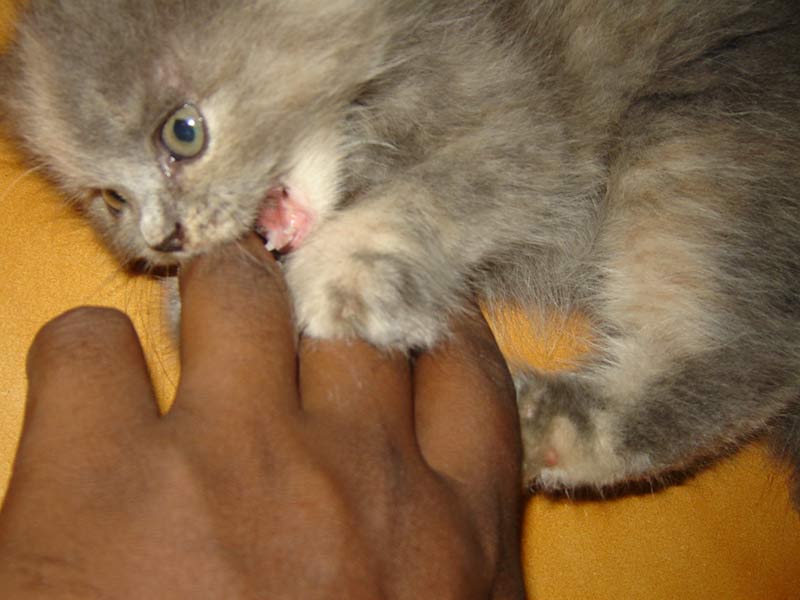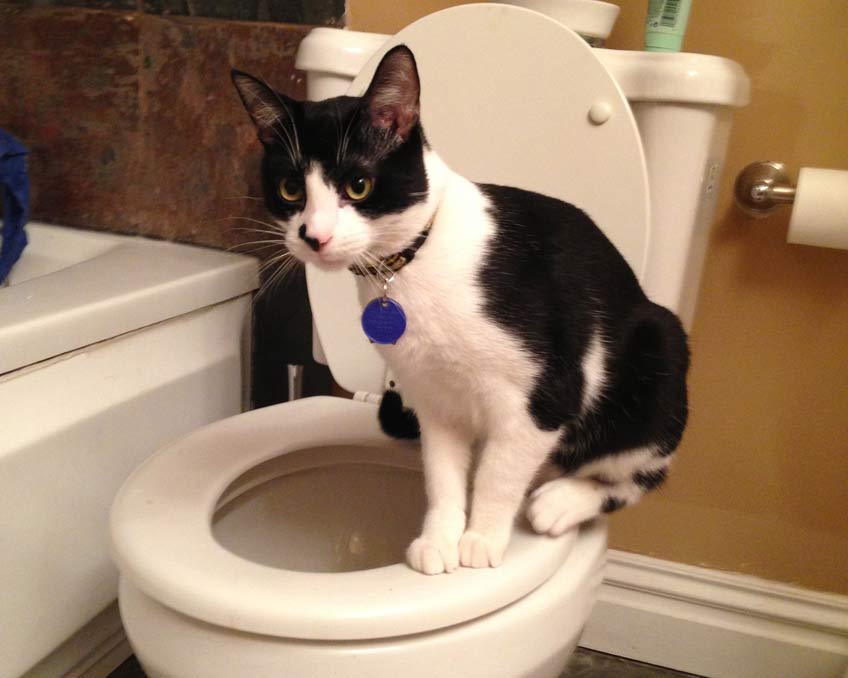How to introduce a cat to a new home when moving? Whether you are a neophyte in the realm of feline companionship or an aficionado seeking to extend your feline family, the introduction of a new cat necessitates a thoughtful approach, laden with nuanced considerations. The prospect of feline cohabitation demands a meticulous evaluation of your living space, existing pets, and, most importantly, an understanding of the distinctive personality that each cat brings to the proverbial table.
In the delicate dance of feline companionship, the crescendo of joy and health arises from a harmonious blend of the right environment and dedicated care. Regular veterinary check-ups, a balanced diet tailored to their unique nutritional needs, and mindful observation of their behavior form the pillars of a healthy feline life. Like a maestro conducting a symphony, the caregiver orchestrates the elements, ensuring the well-being of their furry protege.
This is not merely about providing sustenance but about cultivating a haven where felicity intertwines with vitality. The pursuit of a flourishing feline friendship entails an ongoing commitment, where the caregiver becomes both custodian and confidant. It is a journey that transcends the mundane and evolves into a tapestry woven with threads of shared moments, whispered purrs, and the gentle cadence of paws padding through the corridors of companionship.
Essential Preparations for First-Time Cat Owners
Embarking on the journey of first-time feline parenthood necessitates more than just a whimsical fascination with furry creatures. As a nascent cat custodian, the preamble to your feline companionship involves a meticulous orchestration of essential supplies. Beyond the allure of adorableness, safety considerations loom large, demanding your attention with unwavering diligence. Grooming rituals, medical caretaking, and the sagacious acknowledgment of the protracted commitment entailed in cat ownership constitute the warp and weft of this intricate fabric.
The Seasoned Cat Owner’s Dilemma
Even for those seasoned in the subtle art of feline companionship, the introduction of a new cat unveils a unique set of quandaries. As you contemplate expanding your feline collective, a pantheon of pivotal considerations must be etched into the mosaic of your contemplation. It’s not merely about adding another feline figure; it’s about orchestrating a delicate symphony where existing and incoming members harmonize, and potential discord is deftly precluded.
Unique Feline Personalities
While cats, by nature, embody an independence that verges on the stoic, it is imperative to grasp the idiosyncratic nature of each feline entity. Much like the diversified tapestry of human personalities, your prospective cat, existing pets, and the very fabric of your abode bear unique imprints of character. Recognizing this kaleidoscope of individualities becomes the compass steering you through the labyrinthine journey of integrating a new cat into your domestic tableau.
Insights into Cat Adoption
Within the confines of this narrative, we endeavor to unravel the mystique surrounding the introduction of a new cat into your abode. In our discourse, pearls of wisdom will be threaded, elucidating the nuanced dance between the familiar and the novel. Practical tips, borne of experience and expertise, will be imparted, guiding you on how to endow your feline companion with the quintessence of a contented and flourishing existence. The canvas of feline integration is vast, and within its folds, we aim to paint a tapestry of sagacity.
How To Introduce A Shy Cat To A New Home
In crafting a cat-friendly home, the symphony of meticulous planning, thoughtful preparation, and patient integration orchestrates an environment where your feline companion not only survives but thrives, their every whisker attuned to the cadence of a space tailored to their unique sensibilities. Creating an optimal environment for your feline companion is an art, that demands an ensemble of the right elements. From cozy nooks that offer a retreat for their introspective moments to elevated perches that satisfy their innate desire for vertical vantage points, the orchestration of their surroundings requires attention to detail. The palette of supplies, including scratching posts, comfortable bedding, and interactive toys, paint the canvas of their daily existence.
A dash of patience, akin to a subtle undertone, is an indispensable ingredient in this artistic endeavor. Cats, with their independent demeanor, may not immediately embrace their new habitat. A measured approach, coupled with a sprinkle of understanding, allows for the gradual blossoming of a profound bond. Patience becomes the brush that delicately strokes the canvas of their trust, creating a masterpiece of companionship.
1. Acclimating Your New Cat
Introducing a new feline companion to your abode is a thrilling endeavor, yet one that demands a nuanced approach. The initial days, and perhaps even an extended span, are critical for your cat to navigate and assimilate its novel environment. During this pivotal adjustment period, the delicate dance of building trust and creating a conducive atmosphere for your new four-legged confidante unfolds. It’s a process that demands patience, understanding, and a keen eye for subtle cues that speak volumes in the silent language of feline communication.
Welcoming a new cat into your home is an exciting but delicate process. Understandably, it may take a few days, and at times, even longer for your feline companion to establish a sense of comfort within its new surroundings. This adjustment period is crucial for building trust and fostering a positive environment for your new four-legged friend.
In these early moments, your cat may manifest signs of uncertainty or timidity, exploring uncharted territory with cautious steps and wide-eyed curiosity. The symphony of unfamiliar scents, sights, and sounds can be overwhelming, necessitating a gentle, gradual introduction to each facet of its newfound habitat. Create safe spaces where your cat can retreat to if the world becomes a bit too much, allowing it to acclimate at its own pace. This period of adjustment is not merely a logistical relocation but a psychological transition for your feline friend, a metamorphosis from the known to the unknown.
2. Creating a Cat-Friendly Sanctuary
Understanding the intricate nuances of feline behavior is paramount when endeavoring to forge a home environment that seamlessly aligns with their intrinsic needs. Regardless of a cat’s age, the introduction of a new setting can trigger a spectrum of behaviors, some of which may veer towards the destructive. Hence, the onus lies on the discerning owner to methodically tailor their living space, meticulously eliminating potential hazards and establishing a haven that resonates with the unique sensibilities of their cherished feline.
Welcoming a new cat into your abode necessitates the establishment of a secure and secluded haven, a sanctuary where the feline can gracefully traverse the delicate bridge between the familiar and the unknown. This private enclave serves as a buffer against the sensory overload that may emanate from the novel sights, sounds, and scents that punctuate its newfound environment. This pivotal step assumes an even greater significance in households already inhabited by other animals, where the initial isolation of the new cat becomes not just a gesture of caution but a crucial strategy to avert unnecessary stress and preempt territorial skirmishes.
3. Adapting Your Space for Feline Exploration
As you embark on the journey of feline companionship, a conscientious owner must go beyond mere isolation; meticulous preparation of the shared space is the key to fostering an environment conducive to exploration and discovery. It involves a detailed examination of every nook and cranny, identifying potential hazards that might pose a threat to your cat’s safety or trigger anxiety. Concealed cords, toxic plants, and precarious objects are but a few examples of potential pitfalls that necessitate vigilant scrutiny. By transforming your living space into a veritable haven, replete with cat-friendly furniture and strategically placed scratching posts, you create an ambiance that invites curiosity while safeguarding against inadvertent mishaps.
A cat’s world is one woven with intricacies, where mental stimulation is as vital as physical safety. The creation of a stimulating atmosphere involves the incorporation of interactive toys, vertical spaces for climbing, and cozy hideouts where the feline can indulge its natural proclivity for observation. Introducing these elements not only caters to their inherent instincts but also establishes a dynamic and engaging environment that mitigates boredom, ensuring a content and well-adjusted companion.
4. Navigating the Initial Phase
The integration of a new cat into a household with pre-existing furry inhabitants demands finesse and a strategic approach. During the initial phase, where the scent of the unfamiliar intermingles with the established olfactory landscape, isolation becomes a crucial tactic. This sequestration is not a mere segregation; it is a thoughtful strategy aimed at averting undue stress and territorial disputes that may ensue from the collision of distinct feline territories.
As the initial period unfolds, gradual introductions become the linchpin of successful integration. Scent swapping, where items that carry the scent of each cat are exchanged, serves as a subtle precursor to face-to-face encounters. Patience becomes an invaluable virtue as feline hierarchies are renegotiated, establishing a delicate equilibrium that sets the stage for harmonious coexistence. Supervised interactions, coupled with positive reinforcements, transform the integration process into a journey of mutual acceptance, fostering an environment where the collective purrs of contentment resonate through the shared spaces.
5. Essential Supplies for Feline Well-being
Ensuring the holistic well-being of your cat hinges on the thoughtful provision of indispensable supplies. These go beyond mere necessities; they constitute the building blocks of a felicitous and flourishing existence for your furry companion. The cornerstone of this provision is a constant and abundant supply of high-quality, nutritionally balanced food, tailored to meet the specific needs of your cat’s breed, age, and health requirements. Paired with this gastronomic cornerstone is an unceasing source of fresh, clean water—a fundamental elixir that sustains life and vitality.
Ensuring the happiness and health of your cat hinges on providing essential supplies. These encompass the basics: a consistent supply of high-quality food and water, a meticulously maintained litter box complete with suitable litter, a dedicated scratching post or pad to satisfy instincts, a comfortable bed or cozy corner for rest, grooming tools to maintain their pristine coat, and an array of toys to engage their playful nature.
In the realm of personal hygiene, a diligently maintained litter box, armed with the right type of litter, forms a sanctuary for your cat’s most private moments. The provision of a dedicated scratching post or pad is not a mere indulgence but a recognition of your cat’s intrinsic need to flex its claws and mark its territory. A snug and inviting resting place, coupled with grooming tools for the occasional pampering session, contributes to the physical and emotional well-being of your feline companion. And lest we forget, an assortment of toys, each catering to different aspects of your cat’s playful instincts, serves as a gateway to joy, exercise, and mental stimulation. In this tapestry of feline care, each element is a thread intricately woven into the fabric of your cat’s contentment and vitality.
6. Gradual Introductions for Lasting Bonds
Establishing enduring connections with a novel feline addition to your domestic realm demands a meticulous and patient approach, where the virtue of patience takes precedence. Whether your dwelling is already graced by the presence of other four-legged companions or stands as a solo sanctuary for your newfound feline friend, the process of acclimatization unfolds as a delicate dance that requires a measured and gradual tempo. It becomes paramount to grant your recent cat companion the opulent luxury of time, allowing it to gracefully navigate the intricate labyrinth of its unfamiliar surroundings. This deliberate pace ensures a seamless transition, facilitating your feline friend’s entry into the warm embrace of its newfound abode.

7. Inaugural Veterinary Visits
Embarking on the journey of pet parenthood unfurls as a momentous expedition that necessitates the initiation of a crucial ritual within the inaugural week of adoption—a visit to the esteemed veterinarian. This early rendezvous, far beyond being a perfunctory health check-up, stands as a pivotal juncture, a beacon guiding you through the nuanced landscape of responsible pet ownership. It serves as a comprehensive exploration into the well-being of your furry companion, a detailed examination ensuring every aspect of their health is meticulously scrutinized.
Yet, beyond this, it evolves into a crucial platform for acquiring personalized counsel on multifaceted matters, ranging from the intricacies of flea and tick prevention to the indispensable realm of vaccinations. This proactive step becomes the bedrock, the cornerstone for constructing a foundation that not only promises but assures a lifetime of unwavering well-being for your cherished feline companion.
8. Comprehensive Surveillance for Feline Well-being
In the intricate fabric of feline companionship, particularly those felines who have traversed the challenging path of shelter life, the lingering remnants of health issues weave a delicate tapestry. A conscientious pet owner, akin to a vigilant sentry, assumes the role of a watchful guardian. This responsibility entails a meticulous examination of the newly adopted feline, a discerning eye attuned to subtle indicators of common maladies. The imperative to shield them from potential infections deeply rooted in shelter environments takes precedence, transforming into a vital linchpin in the framework of their enduring health and boundless contentment.
Within the labyrinthine journey of shelter-adoption narratives, the spectral threads of health concerns echo the tumultuous past these feline companions have endured. The conscientious custodian, with a commitment bordering on the sacred, becomes the lighthouse of wellness for their newly adopted charge. The intricate dance of safeguarding these feline friends from the residual perils of shelter life transforms into an art form. Every subtle nuance of their behavior becomes a cipher, decoding the potential threats that might lurk beneath the surface. This vigilant custodianship is not just an exercise in observation; it is an intricate ballet, where each movement is a gesture towards their long-term vitality and unrestrained bliss.
Introducing A Scared Cat Into Your Home
Cats, those enigmatic and agile creatures, stand as exceptional companions, demonstrating an uncanny ability to seamlessly integrate into diverse environments. Yet, the prospect of inviting a feline friend into one’s abode necessitates a thoughtful evaluation of several crucial factors. It is not merely a whimsical decision but a commitment demanding consideration and preparation.
Intricacies abound in the realm of feline companionship. The adaptability of these creatures is indeed remarkable, as they swiftly acclimate to their surroundings. However, this adaptation is contingent upon the provision of an environment tailored to their needs and nuances. The key, therefore, lies not only in the choice to bring a cat into your life but in the meticulous orchestration of a space that caters to their unique sensibilities.
1. Essential Supplies for Your New Feline Companion
Introducing a new cat into your home is an exciting venture, but it comes with certain responsibilities and preparations. To ensure a smooth transition for your new feline friend, there are essential supplies you must have at the ready. Regardless of whether you are a seasoned cat owner or a newcomer, these basic necessities include food and water bowls, a litter box with quality litter, a scratching post or pad, a cozy bed, grooming tools, and an assortment of engaging toys. Recognizing that every cat has its own unique preferences, be prepared to experiment to discover what best suits your new companion.
In the initial days, your new cat may exhibit shyness and timidity, making it crucial to provide a designated space that fosters comfort and security. Consider setting up a haven in your bedroom, bathroom, or home office. Ensure privacy and limit contact with other animals in your home during the introductory phase. This dedicated space will serve as a safe retreat where your cat can acclimate to its new surroundings at its own pace.
2. Creating a Safe Space for Your New Cat
Introducing a new feline companion to your home can be a daunting experience for the cat. The unfamiliar surroundings, accompanied by the presence of other animals, may trigger a range of responses, from shyness and withdrawal to outright aggression. To ease this transition, consider allocating a specific area in your home as a sanctuary for your new cat. This designated space should feature essentials such as food and water bowls, a litter box, and a comfortable bed. Ensuring that other pets cannot access this area allows the new cat to acclimate at its own pace.
3. Exercising Patience in Introduction
Respecting the individuality of your new cat is paramount during the initial phase of adjustment. The timeframe for a cat to acclimate can vary greatly, stretching from mere days to several months, particularly if your household already includes other animals. It’s crucial not to impose your presence on the cat prematurely or rush introductions with existing pets. Granting your feline friend personal space fosters a sense of trust, paving the way for a deeper bond over time. Gradual and monitored introductions with other animals ensure a smoother integration into the household dynamic. See why thousands of cats love BoxCat
4. Fostering Comfort During the Transition
Recognizing that your new cat might initially feel apprehensive, creating an environment that fosters comfort is crucial. Gradually introduce your cat to different areas of your home, allowing it to explore at its own pace. Implement positive reinforcement through treats and affection to build trust and strengthen the bond between you and your feline companion. Be patient and understanding, as each cat adapts uniquely to new surroundings, and remember that a supportive and nurturing environment significantly contributes to a successful transition.
By taking these precautions and being attentive to the needs of your new cat, you’ll not only create a harmonious living environment but also embark on a rewarding journey of companionship and mutual understanding.
5. Scheduling a Veterinary Appointment
While shelters diligently attend to the health of animals in their care, post-adoption veterinary attention remains crucial. Within the first week of adoption, schedule a comprehensive check-up with a veterinarian. This not only serves to identify any existing health conditions but also provides an opportunity for necessary vaccinations and treatments. Your veterinarian can offer tailored advice on preventive measures such as flea and tick medications, dietary recommendations, grooming practices, and overall health guidelines.
6. Creating a Cat-Friendly Environment
Cats, by nature, can display destructive behavior when introduced to a new environment. This may manifest as territorial marking, chewing on cords, clawing furniture, or aggression towards humans and other animals. While this behavior is often temporary, it requires proactive measures to create a cat-friendly space. Safeguard electrical cords and blind cords from their reach, and carefully assess the plants in your home, ensuring they are non-toxic if ingested.
To mitigate potential hazards, secure medications, toiletry items, and cleaning supplies away from curious paws. Keep wastebaskets and garbage cans concealed to prevent exploration, close toilet seats, and ensure washer and dryer doors are always shut. Pay attention to smaller appliances, such as paper shredders, and unplug them when not in use. These precautions are vital during the initial adjustment period when your new cat is still acclimating to its surroundings. Cat accessories on Amazon
7. Vigilance in Monitoring Your Cat’s Health
The diverse environments in shelters mean that newly adopted cats might carry pests or infections. This potential health risk necessitates a vigilant approach in the early stages of adoption. Fleas, ticks, and other infections can affect not only the new cat but also pose a threat to existing pets. Observing your cat for symptoms such as coughing, sneezing, runny eyes, nasal discharge, or irregular bowel movements is imperative. Promptly seeking veterinary attention for any signs of illness is vital to prevent the spread of diseases and ensure the long-term well-being of your feline companion.
In essence, the incorporation of a cat into one’s life is a nuanced art, a melange of considerations, preparations, and the ever-evolving symphony of companionship. With thoughtful planning, the right environment, and a sprinkle of patience, learning how to introduce a cat to a new home when moving, you embark on a journey not only of caretaking but of coexistence, creating a masterpiece of shared moments and enduring friendship.
Other Interesting Articles
- Ocicat Cat Breed Profile: Health, Facts, Traits, Groom, Care
- Ojos Azules Cat Breed Profile: Health, Traits, Groom, Care
- Oregon Rex Cat Breed Profile: Health, Traits, Groom, Care
- Oriental Bicolor Breed Profile: Health, Traits, Groom, Care
- Oriental Longhair Breed Profile: Health, Traits, Groom, Care
- Oriental Shorthair Breed Profile: Health, Traits, Groom, Care
- Peterbald Cat Breed Profile: Health, Traits, Groom, Care
- Pixie-Bob Cat Breed Profile: Health, Traits, Groom, Care
- Ragamuffin Cat Breed: Health, Facts, Traits, Groom, Care
- Russian White Cat Breed Profile: Health, Traits, Groom, Care
- Serengeti Cat Breed Profile: Health, Traits, Groom, Care
- Savannah Cat Breed Profile: Health, Traits, Groom, Care
- Selkirk Rex Cat Breed Profile: Health, Traits, Groom, Care
- Singapura Cat Breed Profile: Facts, Coat, Traits, Groom, Care
- Sokoke Cat Profile, Traits, Health, Facts, Grooming, Care
- Somali Cat Profile, Traits, Health, Facts, Grooming, Care
- Turkish Angora Cat Profile, Traits, Health, Grooming, Care
- Sphynx Cat Breed: Profile, Traits, Health, Grooming, Care
- Turkish Van Cat Breed: Profile, Traits, Grooming, Care
- Toyger Cat Breed: Profile, Traits, Health, Grooming, Care



